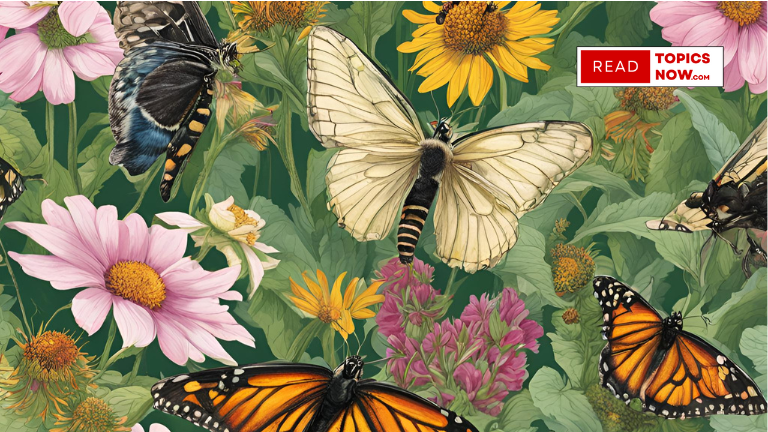
Creating a Pollinator-Friendly Garden: Why It’s Important and How to Do It

Creating a Pollinator-Friendly Garden: Why It’s Important and How to Do It
If you’ve ever watched a bee buzzing from flower to flower or marveled at the beauty of butterflies fluttering through your garden, you’ve witnessed the magic of pollinators in action. Pollinators, including bees, butterflies, birds, and even bats, play a crucial role in the health of our ecosystems by enabling the reproduction of plants. In fact, nearly 75% of flowering plants and 35% of global food crops depend on pollinators.
In this blog, we’ll discuss why creating a pollinator-friendly garden is essential and share actionable steps you can take to support these vital creatures while also creating a vibrant, thriving garden of your own.
Why Is a Pollinator-Friendly Garden Important?
A pollinator-friendly garden is beneficial not only to pollinators but also to the environment and the plants in your garden. Here’s why it matters:
- Supports Biodiversity: Pollinators help maintain biodiversity by facilitating the reproduction of a variety of plant species, which in turn provides food and habitat for a wide range of animals.
- Boosts Crop Production: Pollination is crucial for fruit and vegetable production. By supporting pollinators in your garden, you’re contributing to food security and helping to ensure that plants, crops, and even trees can thrive.
- Enhances Ecosystem Health: Pollinators are essential for the survival of many ecosystems. Without them, entire plant communities would struggle, and other animals that depend on those plants would face challenges as well.
- Prevents Decline of Pollinator Populations: Many pollinator species are facing threats from habitat loss, pesticides, and climate change. By creating a pollinator-friendly garden, you can help provide them with a safe haven.
How to Create a Pollinator-Friendly Garden
Creating a pollinator-friendly garden doesn’t require a lot of space or effort, but it does require some planning. Here’s how you can get started:
1. Choose Native Plants
Native plants are the foundation of a healthy pollinator garden because they have evolved alongside local pollinators, offering the right types of nectar and pollen. Native flowers, shrubs, and trees are better equipped to thrive in your area’s soil and climate, making them easier to maintain.
- Bees: Native wildflowers like black-eyed Susans, coneflowers, and lupines are particularly attractive to bees.
- Butterflies: Plants like milkweed, purple coneflowers, and asters provide nectar for butterflies and their larvae.
- Hummingbirds: Hummingbirds love tubular flowers such as trumpet vine, salvia, and columbine.
Pollinator | Best Native Plants |
Bees | Black-eyed Susan, Coneflower, Lupine, Bee Balm, Asters |
Butterflies | Milkweed, Purple Coneflower, Asters, Butterfly Bush |
Hummingbirds | Trumpet Vine, Salvia, Columbine, Fuchsia |
2. Plant a Variety of Flowers
A diverse range of flowers will attract a wider variety of pollinators. Include flowers of different colors, shapes, and blooming times. Consider planting early-blooming flowers like crocus or willow trees to support pollinators when they first emerge in the spring. Also, plant late-blooming flowers like asters and goldenrod to provide resources as pollinators prepare for winter.
3. Provide Shelter and Habitat
Pollinators need shelter to rest, nest, and overwinter. Consider these options for creating a more welcoming habitat:
- Bee Houses: Provide nesting sites for solitary bees by adding bee houses to your garden.
- Birdhouses: Attract beneficial birds like hummingbirds or cavity-nesting species by including birdhouses.
- Dead Wood and Leaf Piles: Allowing some natural mess in your garden—like leaf piles or dead logs—can provide essential habitat for pollinators.
4. Avoid Pesticides and Herbicides
Many pesticides and herbicides are harmful to pollinators. Instead, choose organic or natural alternatives to keep pests under control. If you need to use chemicals, apply them early in the morning or late in the evening when pollinators are less active.
5. Provide Fresh Water
Pollinators need access to fresh water. Create a simple water feature in your garden, such as a birdbath or shallow bowl with stones. The stones provide a place for pollinators to land and drink without risk of drowning.
6. Create a Continuous Blooming Cycle
Having flowers in bloom throughout the year is essential for providing continuous food sources for pollinators. Make sure your garden has something flowering during each season. For example, you could plant:
- Spring: Crocus, Daffodils, Wild Violets
- Summer: Lavender, Bee Balm, Black-eyed Susan
- Fall: Goldenrod, Asters, Sedum
7. Bonus Tip: Create a Pollinator Corridor
If you have a larger property or want to help pollinators even more, consider planting a pollinator corridor. A pollinator corridor is a strip of land filled with nectar-rich plants that helps connect fragmented habitats. This is especially important in urban areas where green spaces may be limited.
FAQs About Pollinator-Friendly Gardens
- What are the best plants to attract bees to my garden?
Bees are attracted to flowers like black-eyed Susans, lupines, coneflowers, and bee balm. Native wildflowers are particularly effective.
- How do I know which plants are native to my area?
You can find native plants by checking with local gardening centers, botanical gardens, or native plant societies. Many online resources also list plants specific to your region.
- Is it OK to use pesticides in a pollinator garden?
It’s best to avoid using pesticides and herbicides, as they can harm pollinators. If you must use them, choose non-toxic options and apply them when pollinators are least active (early morning or evening).
- Do pollinator-friendly gardens require a lot of maintenance?
Once established, pollinator gardens can be relatively low-maintenance. Native plants are adapted to your area and generally require less water and care. Just make sure to water them during dry spells and prune occasionally.
- What is a pollinator corridor?
A pollinator corridor is a connected area of plants that provides nectar and habitat for pollinators. It can help connect fragmented habitats and offer a safe path for pollinators to travel between food sources.

I am Ananya Sethy, a recent MA graduate in English from KIIT University, Bhubaneswar. With a strong foundation in language and literature, I am passionate about creative writing and keen to embark on a career in content writing.






